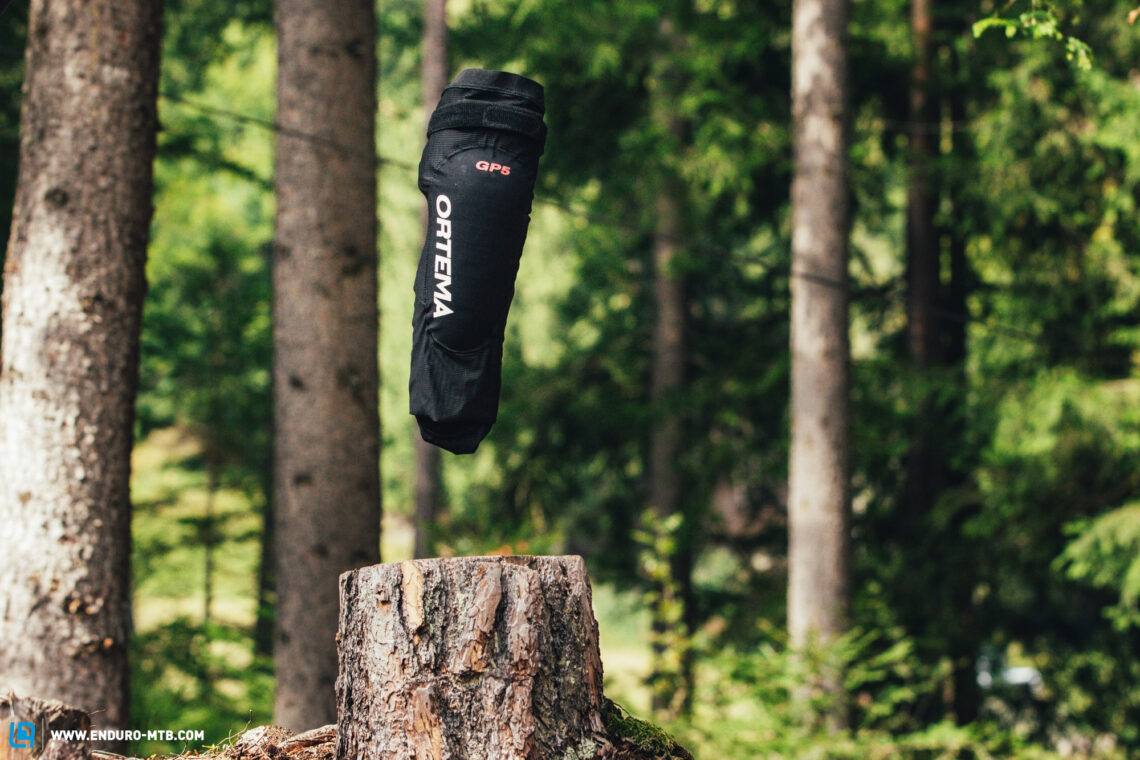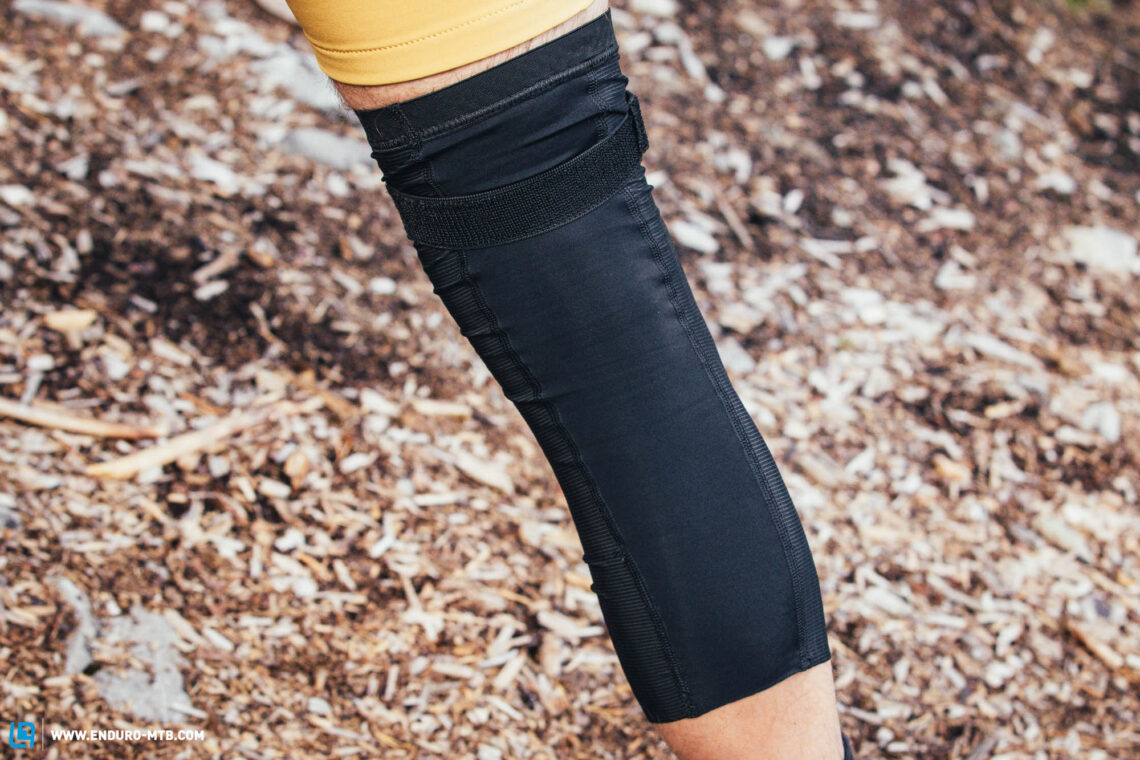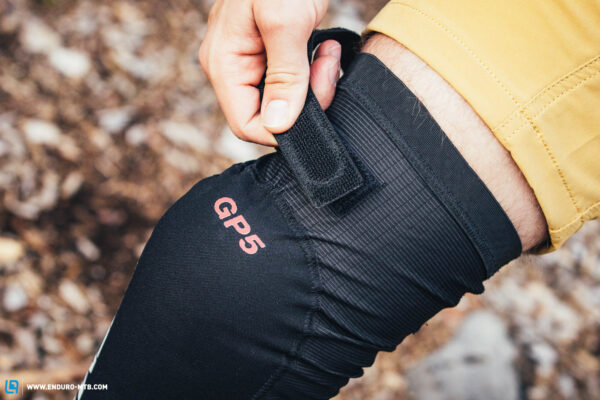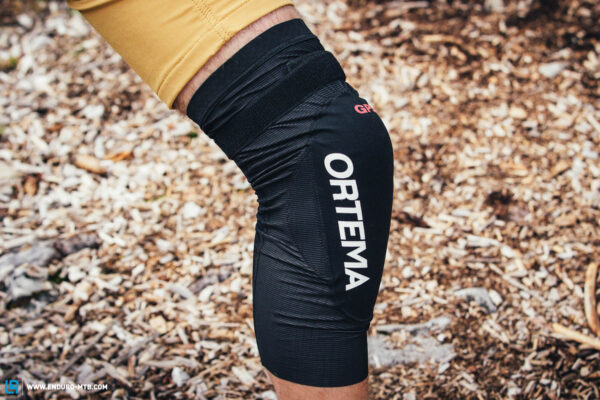Ortema GP5 – In our 2022 trail knee pad group test
Ortema are German orthotics specialists who also offer a wide range of protectors for different sport disciplines, including ice hockey, ball sports and even motorcycling and mountain biking. The GP5 knee pad is Level 2 certified and offers one of the highest levels of protection in the entire test field, reading 13 kN at 3.4 ms on the lab monitors. At just 136 g, it’s also one of the lightest pads, while its € 89 price tag places it in the mid field of this test.
Click here for an overview: 14 trail knee pads in test

Fastening System Elastic Strap | Lab Test Results 13 kN at 3.4 ms | Manufacturer’s website
The GP5 is made entirely of a thin, lightweight fabric with a firmer, abrasion resistant Cordura-Stretch material providing additional support on the front plate. A printed Silicone strip around the thigh prevents it from slipping and is complemented by a removable Velcro fastener – albeit only at the top. There’s no fastening on the calf end, not even a seam, and the sleeve looks as if it were simply cut off at the bottom. The insert can be removed from the sleeve and is complemented by additional padding on the outside, but this doesn’t add to the protective qualities of the GP5 knee pads.



The Ortema GP5 on the trail
When you first slip it over your legs, the Ortema GP5 feels a bit stiff and takes a while until it wraps around your knees, especially in cold temperatures. After a few minutes, however, the insert warms up and becomes pleasantly flexible, ensuring a comfortable wear in combination with the lightweight sleeve. However, the thin sleeve material is weak and unstable, causing the pads to slip, especially on long and rough descents – and the Velcro fastener on the thigh doesn’t help much either! To remove the insert, Ortema rely on a rudimentary cut in the sleeve, renouncing more sophisticated solutions like material overlap or more advanced stitching techniques. Once the pad sits in place, the kneecap inevitably ends up in the slit under the insert, which can be rather uncomfortable – although this also depends on your anatomy. While the thin material ensures good ventilation, you can tell that the protector has fewer vent holes than other pads in this test, creating a significantly warmer inner climate.
Tops
- High level of protection at low weight
Flops
- Slips noticeably
- Stiff at first with colder temperatures
- Depending on the fit, the insert sits uncomfortably right on the kneecap
You can find out more about at ortema-shop.com.

The test field
Click here for an overview: 14 trail knee pads in test
All kneepads in test: 100% Teratec Plus (Click for review) | Alpinestars Paragon Plus (Click for review) | AMPLIFI Havok (Click for review) | Chromag Rift Knee Guard (Click for review) | Fox Launch D3O (Click for review) | Ion K Lite (Click for review) | iXS FLOW EVO+ (Click for review) | Leatt AirFlex Pro (Click for review) | Ortema GP5 Knee Protector | Pearl Izumi Elevate Knee Guard V1 (Click for review) | POC Joint VPD 2.0 Knee (Click for review) | Rapha Trail Knee Pad (Click for review) | Scott Soldier 2 (Click for review) | Troy Lee Designs Stage (Click for review)
